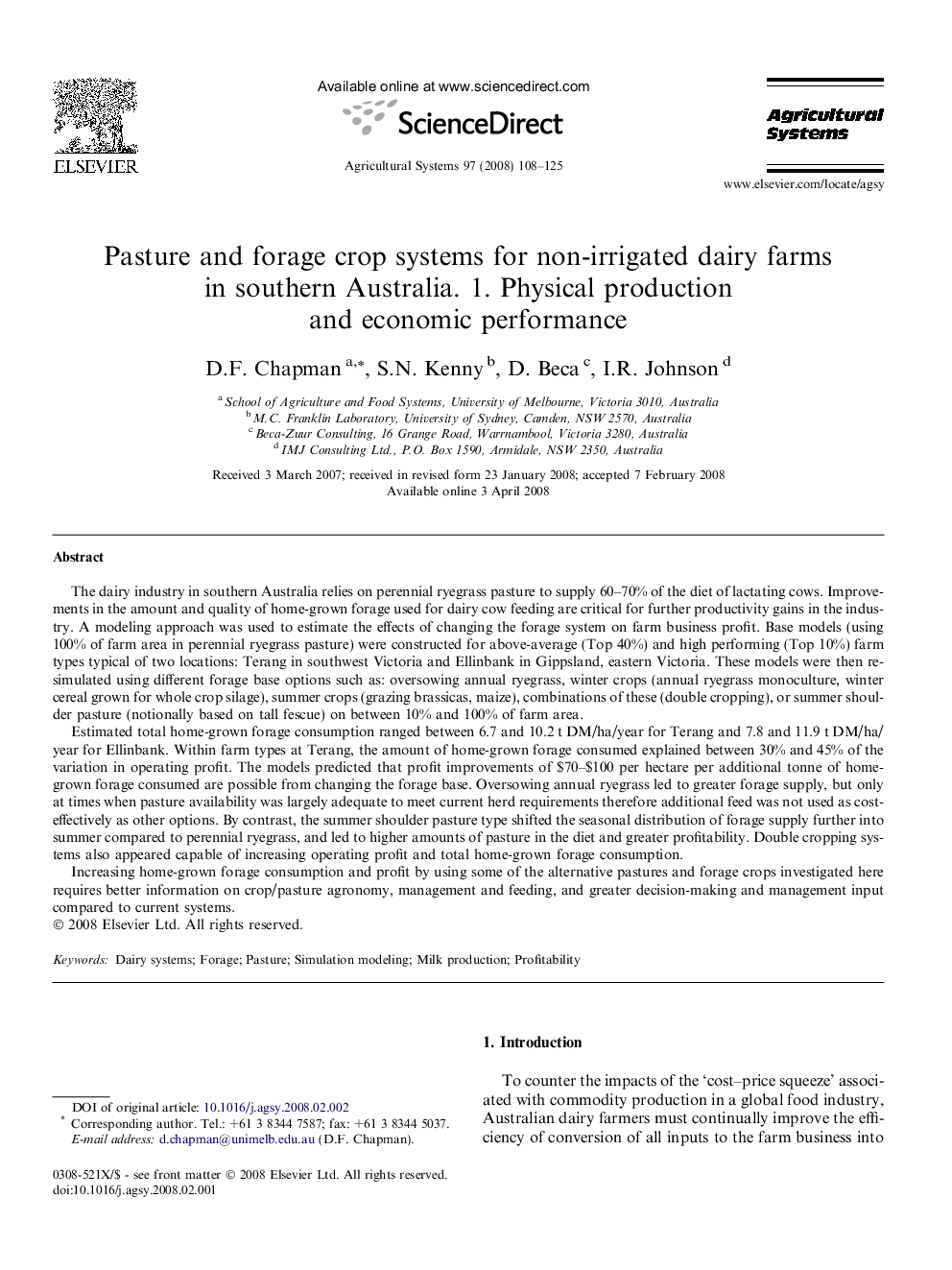| Article ID | Journal | Published Year | Pages | File Type |
|---|---|---|---|---|
| 4491830 | Agricultural Systems | 2008 | 18 Pages |
The dairy industry in southern Australia relies on perennial ryegrass pasture to supply 60–70% of the diet of lactating cows. Improvements in the amount and quality of home-grown forage used for dairy cow feeding are critical for further productivity gains in the industry. A modeling approach was used to estimate the effects of changing the forage system on farm business profit. Base models (using 100% of farm area in perennial ryegrass pasture) were constructed for above-average (Top 40%) and high performing (Top 10%) farm types typical of two locations: Terang in southwest Victoria and Ellinbank in Gippsland, eastern Victoria. These models were then re-simulated using different forage base options such as: oversowing annual ryegrass, winter crops (annual ryegrass monoculture, winter cereal grown for whole crop silage), summer crops (grazing brassicas, maize), combinations of these (double cropping), or summer shoulder pasture (notionally based on tall fescue) on between 10% and 100% of farm area.Estimated total home-grown forage consumption ranged between 6.7 and 10.2 t DM/ha/year for Terang and 7.8 and 11.9 t DM/ha/year for Ellinbank. Within farm types at Terang, the amount of home-grown forage consumed explained between 30% and 45% of the variation in operating profit. The models predicted that profit improvements of $70–$100 per hectare per additional tonne of home-grown forage consumed are possible from changing the forage base. Oversowing annual ryegrass led to greater forage supply, but only at times when pasture availability was largely adequate to meet current herd requirements therefore additional feed was not used as cost-effectively as other options. By contrast, the summer shoulder pasture type shifted the seasonal distribution of forage supply further into summer compared to perennial ryegrass, and led to higher amounts of pasture in the diet and greater profitability. Double cropping systems also appeared capable of increasing operating profit and total home-grown forage consumption.Increasing home-grown forage consumption and profit by using some of the alternative pastures and forage crops investigated here requires better information on crop/pasture agronomy, management and feeding, and greater decision-making and management input compared to current systems.
